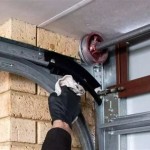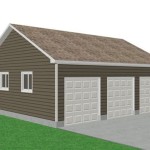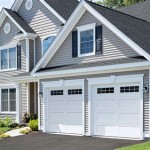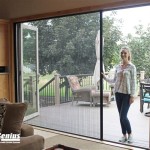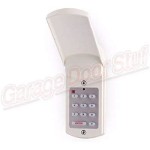Exploring the Potential of 3-Car Garage with Loft Plans
The demand for flexible and multifunctional spaces within residential properties has steadily increased in recent years. As property sizes often remain constant, homeowners are seeking ways to maximize the utility of existing structures or new construction. One increasingly popular solution is the 3-car garage with loft plans. This configuration efficiently blends the practical need for vehicle storage with the added benefit of a potentially versatile upper-level space.
A 3-car garage provides ample room for multiple vehicles, hobby equipment, or even boat storage, depending on the homeowner's requirements. The addition of a loft above enhances the garage's functionality significantly. This loft space can be adapted into a home office, a guest suite, a recreational area, or even an income-generating rental unit (subject to local regulations and permits). Properly designed 3-car garage with loft plans offer a substantial return on investment through improved property value and increased usability.
Choosing the right 3-car garage with loft plan involves careful consideration of several factors, including the intended use of the loft, local building codes and regulations, budget constraints, and aesthetic preferences. Working with experienced architects or design professionals is crucial to ensure the final structure meets both practical necessities and long-term goals.
Key Point 1: Understanding the Benefits of a 3-Car Garage with Loft
The advantages of incorporating a loft into a 3-car garage extend beyond mere storage and parking. The secondary space offered by the loft presents numerous opportunities to customize the structure to accommodate a variety of needs. The following are some notable benefits:
Increased Property Value: A well-designed garage with a loft can significantly increase the overall value of the property. The extra usable space is an attractive feature for potential buyers.
Flexibility in Usage: The loft can be transformed into a range of functional spaces. Options include a home office, a guest room, a gym, a studio, or even a small apartment (dependent on local zoning ordinances and proper permitting).
Enhanced Organization: The garage area below can be dedicated solely to vehicle storage and workshop activities, while the loft can house less frequently used items, seasonal decorations, or hobby supplies. This separation leads to a more organized and clutter-free environment.
Potential Rental Income: Depending on local zoning laws and building codes, the loft can be converted into a separate living space, allowing homeowners to generate rental income. This can help offset the initial cost of construction.
Home-Based Business Possibilities: For entrepreneurs or freelancers, the loft provides an ideal space to operate a home-based business. It offers a dedicated work environment separate from the main living areas of the house.
Improved Curb Appeal: A thoughtfully designed garage with a loft can enhance the overall aesthetic appeal of the property. Incorporating architectural details and landscaping can create a visually pleasing structure that complements the main house.
The flexibility in design and functionality makes the 3-car garage with loft a worthwhile investment for homeowners seeking to maximize the potential of their property.
Key Point 2: Factors to Consider When Selecting a Plan
Choosing the right 3-car garage with loft plan requires careful planning and consideration of various factors. Overlooking these elements can lead to costly mistakes and dissatisfaction with the final product. Key considerations include:
Zoning Regulations and Building Codes: Local zoning regulations and building codes govern aspects such as setback distances, height restrictions, and allowable uses for accessory structures. Understanding these regulations is vital before selecting a plan. Failure to comply with local ordinances can result in fines, delays, or even the need to demolish non-compliant structures.
Intended Use of the Loft Space: The planned use of the loft space will significantly influence the design and layout of the garage. A home office will require adequate lighting, ventilation, and electrical outlets. A guest suite will necessitate bathroom and kitchen facilities. A clear understanding of the loft's intended purpose is crucial to choosing a suitable plan.
Garage Size and Dimensions: The dimensions of the garage will dictate the size and layout of the loft. Consider the number of vehicles to be stored, the need for workshop space, and the desired size of the loft. A larger garage will allow for a more spacious loft, but it will also require a larger investment.
Roof Design: The roof design will impact the usable space within the loft. Gable roofs, for instance, provide more headroom than hip roofs, which can be advantageous for creating a comfortable living space. The pitch of the roof also influences the amount of available space.
Staircase Placement: The location and design of the staircase leading to the loft is a critical consideration. The staircase must be easily accessible, safe, and code-compliant. Spiral staircases save space but may not be suitable for all users. Traditional staircases require more floor space but offer greater stability and ease of use.
Windows and Ventilation: Adequate windows and ventilation are essential for creating a comfortable and livable loft space. Windows provide natural light and fresh air, while ventilation helps to regulate temperature and prevent moisture buildup. Consider the placement and size of windows to maximize natural light and minimize heat gain.
Electrical and Plumbing Systems: If the loft will include a bathroom or kitchen, plumbing and electrical systems will need to be installed. Consult with licensed professionals to ensure these systems meet local codes and are properly installed. Consider the location of existing water and sewer lines to minimize the cost of installation.
Insulation and Climate Control: Proper insulation is vital for maintaining a comfortable temperature within the loft. Insulation helps to prevent heat loss in the winter and heat gain in the summer. Consider adding air conditioning or heating to ensure year-round comfort. The type of insulation and climate control system will depend on the local climate and the intended use of the loft.
Budget: The cost of building a 3-car garage with a loft can vary widely, depending on the size, design, and materials used. Establish a realistic budget before selecting a plan. Obtain multiple quotes from contractors to ensure you are getting a fair price. Don't be tempted to cut corners on essential elements, such as structural integrity and code compliance.
Addressing these considerations proactively will help ensure the selected plan aligns with the homeowner's needs, budget, and local regulations, leading to a successful and satisfying construction project.
Key Point 3: Exploring Different Loft Design Options
The beauty of a 3-car garage with a loft lies in its adaptability. The loft space can be designed to serve various purposes, reflecting the individual needs and preferences of the homeowner. Understanding the different design possibilities is crucial in selecting a plan that maximizes the loft's potential. Here are several popular loft design options:
Home Office: A home office is a popular choice for loft conversions. A dedicated workspace provides a private and productive environment for telecommuting, managing personal finances, or running a home-based business. Design considerations include ample natural light, adequate electrical outlets, and comfortable seating. Soundproofing the walls and ceiling can minimize distractions. Shelving and storage solutions are essential for maintaining an organized workspace.
Guest Suite: Transforming the loft into a guest suite provides comfortable and private accommodations for visiting friends and family. This option typically includes a bedroom area, a bathroom, and a small kitchenette. A separate entrance to the loft can enhance privacy and independence for guests. Ensure the space meets all building code requirements for habitability, including egress windows and smoke detectors.
Recreational Room: A recreational room offers a space for relaxation and entertainment. This can include a home theater, a game room, or a hobby area. Consider incorporating a large screen TV, comfortable seating, and gaming equipment. Soundproofing the walls and ceiling is essential for minimizing noise disturbance. Adequate storage for games, movies, and other recreational items is also important.
Art Studio or Workshop: For artists, crafters, or hobbyists, the loft can be transformed into a dedicated art studio or workshop. This option requires ample natural light, ventilation, and storage space for supplies and equipment. Consider installing a utility sink for cleaning up messes. Durable flooring and surfaces are essential for withstanding spills and wear and tear.
Home Gym: Create a dedicated workout space by converting the loft into a home gym. This option requires durable flooring, adequate ventilation, and space for exercise equipment. Consider installing mirrors to monitor form and technique. Incorporate a sound system for motivation. Safety features such as rubber flooring and padded walls can help prevent injuries.
Storage Space: While less exciting than other options, using the loft primarily for storage can be a practical solution for homeowners with limited storage space in their main house. Install shelving, cabinets, and bins to maximize storage capacity. Ensure the space is well-ventilated to prevent moisture buildup. Clearly label storage containers for easy retrieval of items.
Small Apartment/Accessory Dwelling Unit (ADU): Depending on local zoning laws, the loft can be converted into a small apartment or ADU. This can provide rental income or serve as a separate living space for family members. An ADU typically includes a bedroom, a bathroom, a kitchen, and a living area. Ensure the ADU meets all building code requirements for habitability, including separate utility meters and a separate entrance.
The possibilities are endless, and the final design should reflect the individual needs and aspirations of the homeowner. Careful planning and consideration of these design options will help create a functional and enjoyable loft space that enhances the value and utility of the property.
Ultimately, the successful implementation of 3-car garage with loft plans hinges on meticulous planning, adherence to local regulations, and engagement with qualified professionals. By carefully considering the factors outlined above, homeowners can create a valuable addition to their property that meets their specific needs and enhances their lifestyle.

Three Car Garage Plans 3 Loft Plan With Cape Cod Styling 028g 0053 At Www Thegarageplanshop Com

3 Car Detached Garage Plan With Guest Room Bath And Loft 68706vr Architectural Designs House Plans

2386 1 46 X 28 Behm Design

3 Car Garage Plans Three Loft Plan With Siding Façade Design 007g 0006 At Thegarageplanshop Com

Garage Loft Plans 3 Car Plan With 050g 0093 At Www Thegarageplanshop Com

Garage Loft Plans Three Car Plan With Future Guest Quarters 006g 0124 At Thegarageplanshop Com

Garage Plan Cottonwood 2 3986 V1 Drummond House Plans

3 Car Garage Plans Three Plan With Gable Roof Design 050g 0040 At Thegarageplanshop Com

Garage With Loft Plans Ideas Apartment Designs America S Best House Blog

3 Car Garage Plans Apartments Floor Designs

